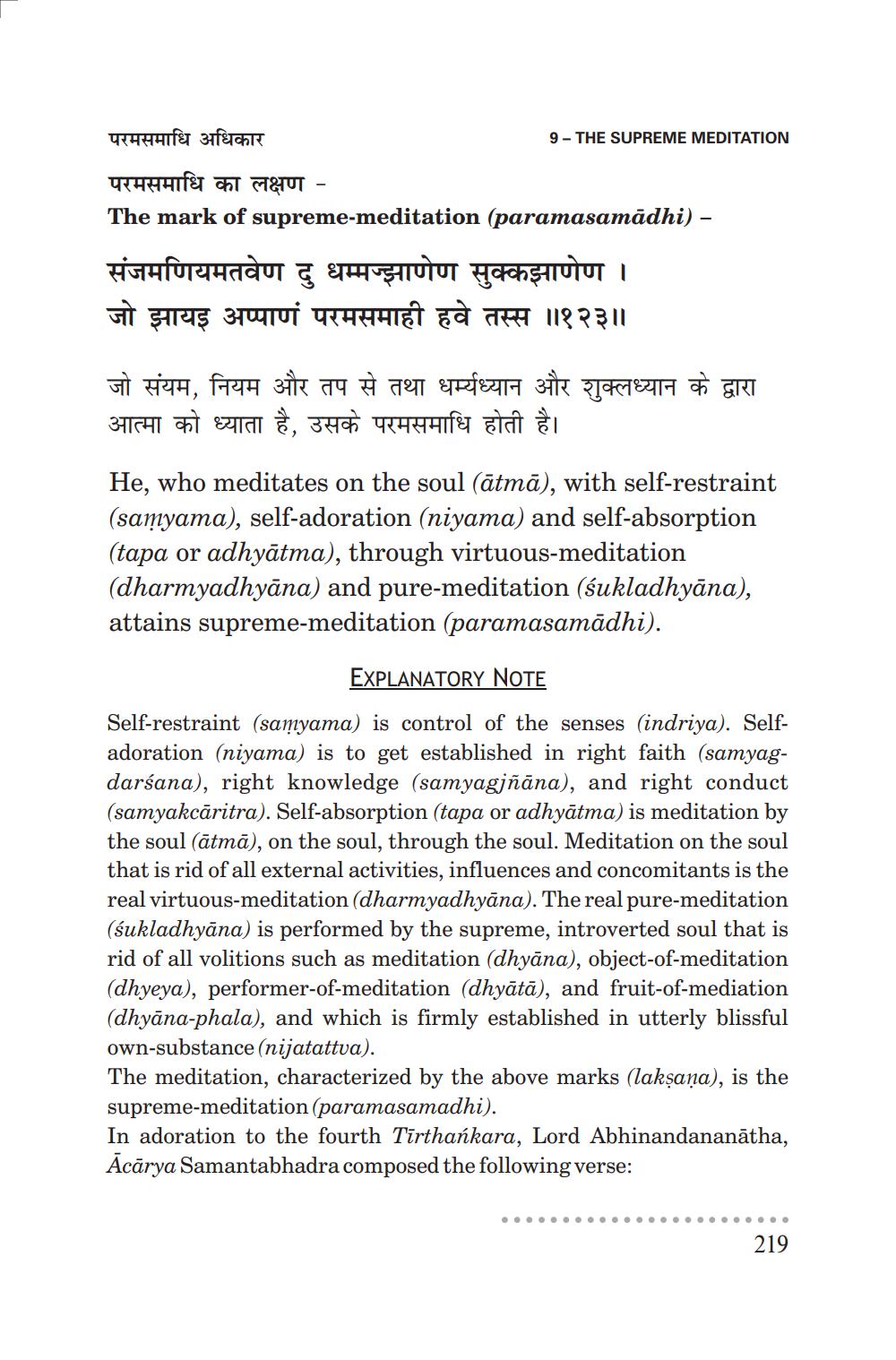________________
परमसमाधि अधिकार
परमसमाधि का लक्षण
The mark of supreme-meditation (paramasamādhi) -
-
9- THE SUPREME MEDITATION
संजमणियमतवेण दु धम्मज्झाणेण सुक्कझाणेण ।
जो झायइ अप्पाणं परमसमाही हवे तस्स ॥ १२३॥
जो संयम, नियम और तप से तथा धर्म्यध्यान और शुक्लध्यान के द्वारा आत्मा को ध्याता है, उसके परमसमाधि होती है।
He, who meditates on the soul (ātmā), with self-restraint (samyama), self-adoration (niyama) and self-absorption (tapa or adhyatma), through virtuous-meditation (dharmyadhyana) and pure-meditation (śukladhyāna), attains supreme-meditation (paramasamādhi).
EXPLANATORY NOTE
Self-restraint (samyama) is control of the senses (indriya). Selfadoration (niyama) is to get established in right faith (samyagdarśana), right knowledge (samyagjñāna), and right conduct (samyakcāritra). Self-absorption (tapa or adhyatma) is meditation by the soul (ātmā), on the soul, through the soul. Meditation on the soul that is rid of all external activities, influences and concomitants is the real virtuous-meditation (dharmyadhyāna). The real pure-meditation (sukladhyāna) is performed by the supreme, introverted soul that is rid of all volitions such as meditation (dhyāna), object-of-meditation (dhyeya), performer-of-meditation (dhyātā), and fruit-of-mediation (dhyana-phala), and which is firmly established in utterly blissful own-substance (nijatattva).
The meditation, characterized by the above marks (lakṣaṇa), is the supreme-meditation (paramasamadhi).
In adoration to the fourth Tirthankara, Lord Abhinandananatha, Acārya Samantabhadra composed the following verse:
.......
.......
219




